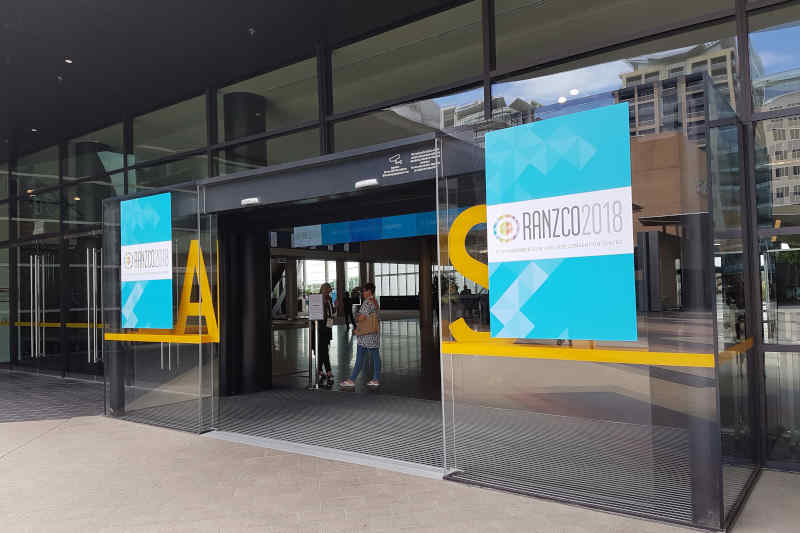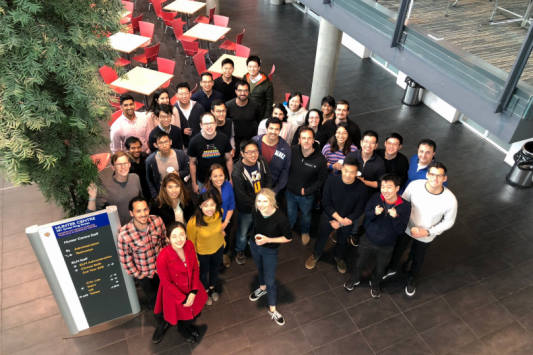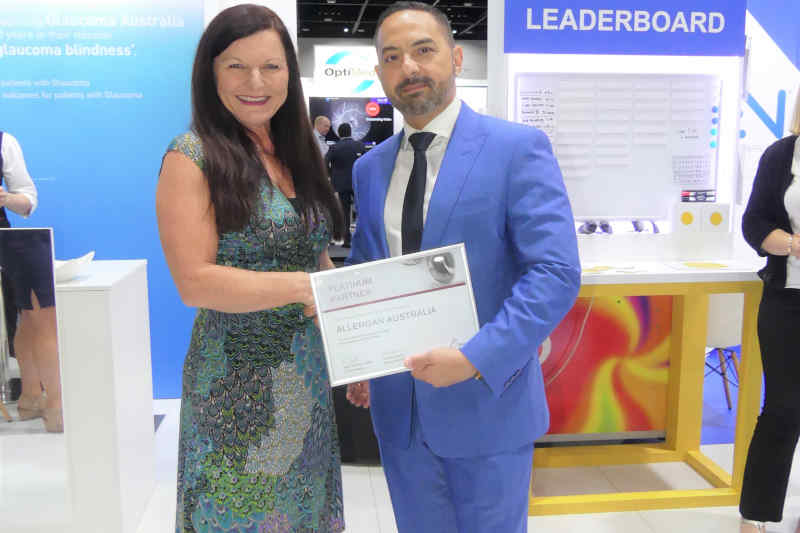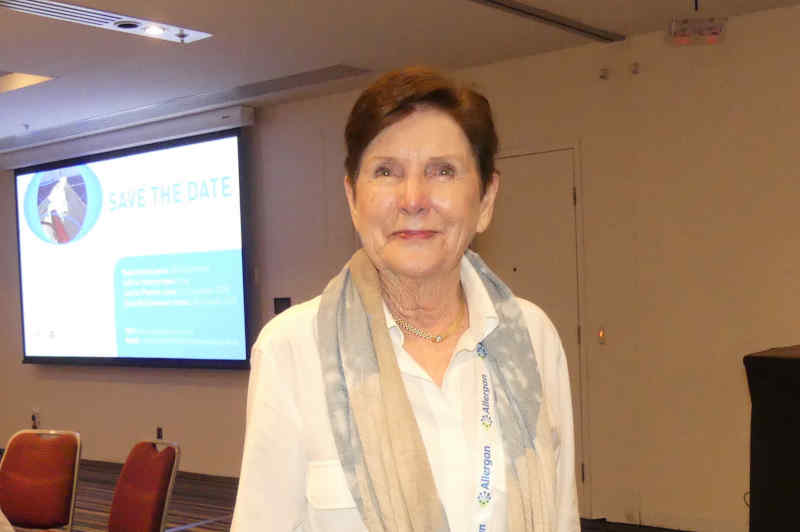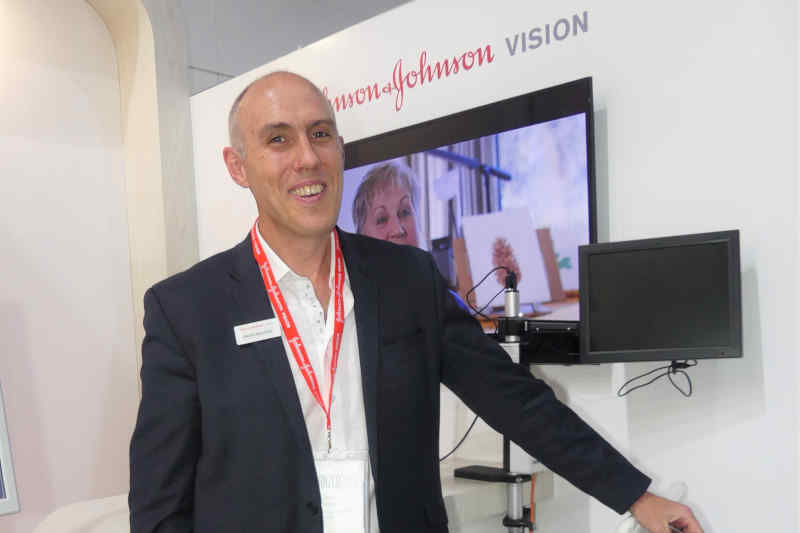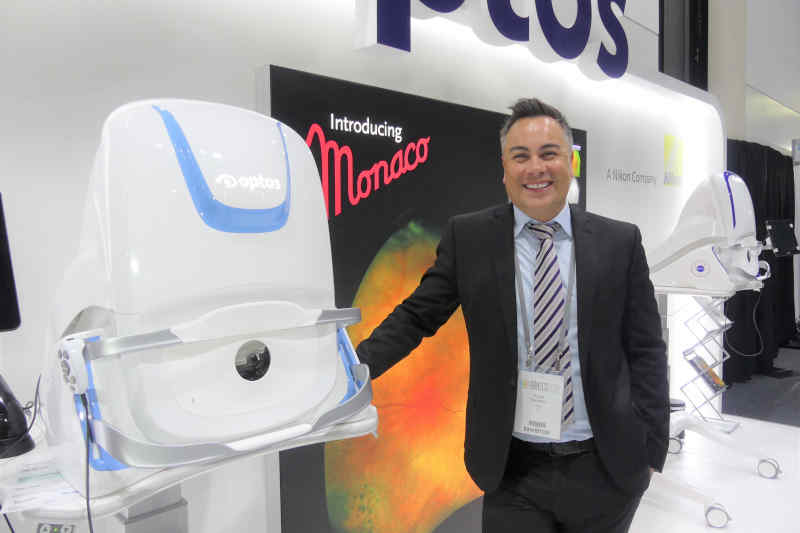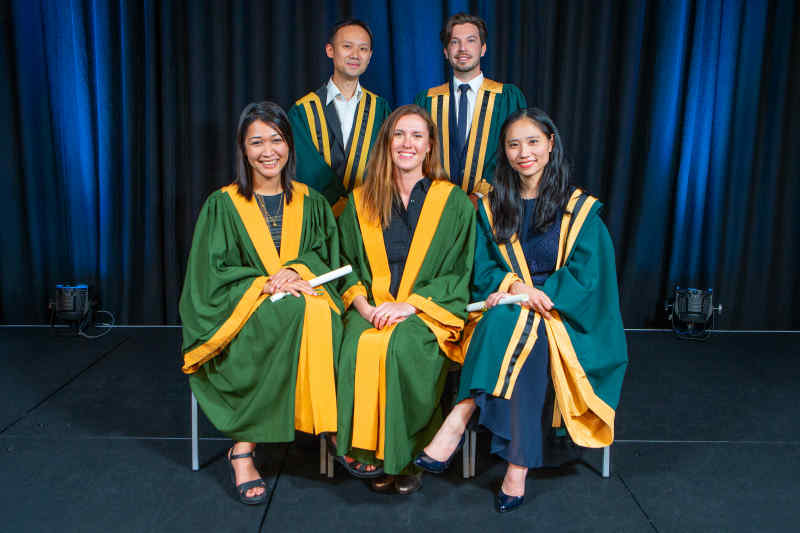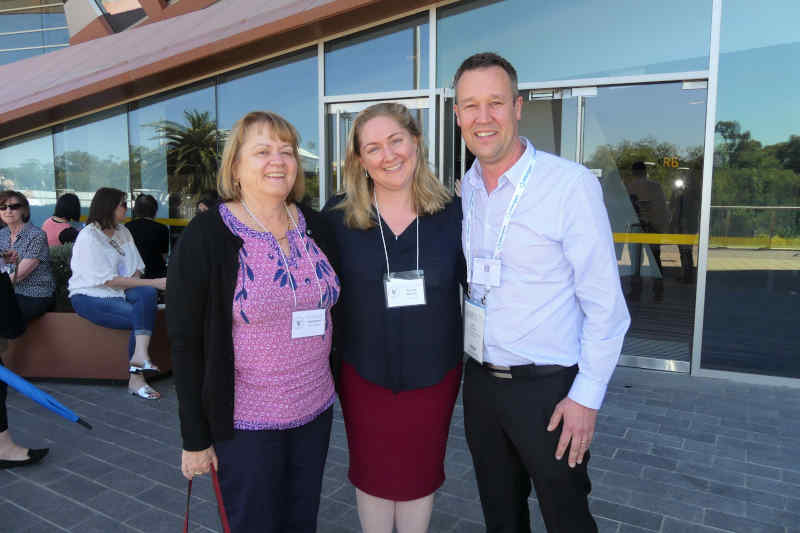RANZCO18: A swoopingly good meeting
The Royal Australian and New Zealand College of Ophthalmology (RANZCO) hosted its 50th annual Scientific Congress in Adelaide, South Australia at the end of 2018, at the heart of the swooping season.
Forewarned with Adelaide’s Coat of Arms featuring a piping shrike (better known as the Australian magpie) and by inhabitants who are colloquially called “crow-eaters” by their Australian neighbours, it was only to be expected that several colleagues became victims of swooping magpies. But we’re glad to report our South Australian RANZCO hosts were way more welcoming than their native avian species.
Plenary sessions kicked off with the Retina Update Lecture by Professor Giovanni Staurenghi from the University of Milan, who spoke on the merits and limitations of OCT angiography in today’s practice and the importance of multimodal imaging as part of our investigative armamentarium to help diagnose and manage complex retinal presentations.
The pregnant patient
Mirroring the incredible range of Adelaide’s weather, which jumped from a balmy 34⁰C to a hailing 11⁰C during the RANZCO congress, there was a vast range of sessions to attend outside the named lectures, with five concurrent strands running. This included a cross-specialty session entitled, What to expect when your patient is expecting, with invited speakers from clinical immunology and allergy and maternal foetal medicine. Dr Alexis Shub, from Mercy Perinatal in Victoria, discussed the effects of anti-vascular endothelial growth factor (anti-VEGF) treatment in pregnancy and the prolonged systemic effect of bevacizumab (Avastin). She also stressed that although ranibizumab (Lucentis) and aflibercept (Eylea) did not appear to share the prolonged systemic effect profile of bevacizumab, they are both Category D-listed medications. As we have access to numerous therapeutic agents, Dr Shub provided us with the good advice to check the Therapeutic Goods Administration (TGA) website for prescribing medicines in pregnancy database and the US National Library of Medicine website, LactMed, as often drugs classed as safe for breastfeeding may not be safe for use during pregnancy.
Neuro-ophthalmology sins
Another interesting session, The Neuro-Ophthalmology Sin Bin, chaired by Professor Helen Danesh-Meyer, featured a host of star-studded speakers including, Associate Professor Clare Fraser, Dr Mark Moster, Associate Professor Celia Chan, Dr Taras Papchenko, Dr Mitchell Lawlor and Associate Professor Samantha Fraser-Bell. Important pearls included the role of OCT in neuro-ophthalmology, differentiating pathological anisocoria, when and how to investigate, when to investigate cranial nerve palsies and tips to help clinicians distinguish papilloedema from pseudo-papilloedema, as well as an update on giant cell arteritis.
Paediatrics
True to our interests was the session on paediatric ophthalmology chaired by Associate Professor James Elder and Dr Deepa Taranath. Associate Professor Susan Carden kicked-off the session highlighting the role of digital widefield retinal photography, fluorescein angiography and handheld optical coherence tomography (OCT) in retinopathy of prematurity. Professor Glen Gole then discussed a valuable resource available to RANZCO trainees and fellows on the American Academy of Ophthalmology’s global ophthalmic education platform, One Network, on amblyopia’s preferred practice pattern, while Associate Professor John Grigg updated us on the childhood glaucoma diagnosis flowchart and genetic advancements in childhood glaucoma. This was followed by a timely reminder by Associate Professor Andrea Vincent on the importance of understanding inheritance patterns to better avail ourselves to the dawn of genetic therapies.
Clinical controversies
Tuesday started with a crowd favourite, Clinical Controversies, where today’s hot eye care topics were presented and discussed. The two most memorable of these were given by Dr J Bradley Randleman, from the University of Southern California, and Professor Marlene Moster, a glaucoma specialist from Wills Eye Hospital and the Thomas Jefferson School of Medicine in Philadelphia.
Dr Randleman discussed the current challenges in keratoconus, including how to define the progression of the disease. He believes that non-invasive biomechanical measurements will be the future keratoconus progression measurement of choice - an exciting area of research to watch, while the wonderful Prof Moster shared her thoughts on one of her key areas of interest, minimally invasive glaucoma surgery (MIGS). Trabeculectomy complications are well known but it was one of the only options for many years until the introduction of MIGS. The advent of smaller devices, such as the XenGel stent and Innfocus Microshunt may bring additional improvements and may potentially be used earlier in the disease process. However, even with all these exciting developments trabeculectomies are here to stay, she said. “In the right patient, at the right time, it is the right procedure.” Both talks were thought-provoking as they addressed controversies but were also enlightening as they addressed the next steps and the clinical breakthroughs and ongoing research that aid comprehension and could lead to better treatments, perhaps even cures.
Also inspiring was Professor Robyn Guymer, head of ophthalmology at Melbourne University and deputy director for the Centre for Eye Research Australia (CERA), who presented the Sir Norman Gregg Lecture. She shared her research journey into age-related macular degeneration (AMD) with her talk, Taking out the waste - AMD is a disease of accumulated debris but maybe it is time to spring clean. Drusen are extracellular debris that tend to accumulate with age on Bruch’s membrane under the retinal pigment epithelium and can be thought of as ‘rubbish’ which reduces the function of the retina, she said, adding that those patients with AMD are also less capable of ‘taking out the rubbish’ due to reduced phagocytosis. This understanding has led to the development of nanosecond laser techniques that aim to help this cleaning progress. Prof Guymer presented her team’s results with this in both animal and human subjects, highlighting the importance of all aspects of the research from basic science to clinical trials to improve visual outcomes in individual patients.
Other highlights
Apart from the thought-provoking and instructive clinical aspects of the 2018 meeting, we were also introduced to another valuable aspect of learning that as a trainee we are not normally exposed to, by Dr Andrew Riley, which was the business side of our world, including practice management and team motivation. It was in this session that we encountered unfamiliar terms such as “grittiness factor”, McGregor’s theory of motivation, etc.; all interesting and important aspects to the non-clinical aspects of an ophthalmic practice.
The social aspects of this meeting were another highlight as they provided the opportunity to catch up with friends and colleagues from across New Zealand, including Dr Shuan Dai, the newly appointed director of ophthalmology at the Queensland Children’s Hospitals, who was kind enough to share his experience of managing department challenges with colleagues. While the wonderful congress dinner at the Adelaide Oval provided some stunning views over the city, making it obvious why Adelaide is sometimes known as the City of Churches, the evening’s exceptional food was matched by wonderful company. The dinner also marked the end of Associate Professor Mark Daniell’s reign as RANZCO president as he passed his chains of office to the new and first female president, Dr Heather Mack; a memorable moment to be present for and a lovely end to the 50th RANZCO congress.
All in all, it has been another fantastic, well organised RANZCO Scientific Congress and we’re both looking forward to the next meeting in Sydney in November 2019.
New Zealand ophthalmology trainee Dr Cheefoong Chong has now taken up a position with the Bay of Plenty District Health Board after completing a fellowship at the Royal Children's Hospital in Melbourne. Dr Samantha Simkin is a therapeutically-qualified optometrist, a member of the BLENNZ National Assessment Team and the Stevenson post-doctoral research fellow at the University of Auckland.










